Interview with artist Melissa Cowper-Smith
Melissa Cowper-Smith has always had a deep connection with nature. That may help explain why her move from New York City to a farm in Morrilton, Arkansas has been an inspiration for her art. As a multimedia artist, Melissa often combines photography, printing and painting on handmade paper in collage to capture and interpret relationships between memories and the objects that help create them. Her handmade paper adds warmth and depth to her work. Melissa’s work can be found at Boswell-Mourot Fine Art in Little Rock and at her website cowpersmith.com.
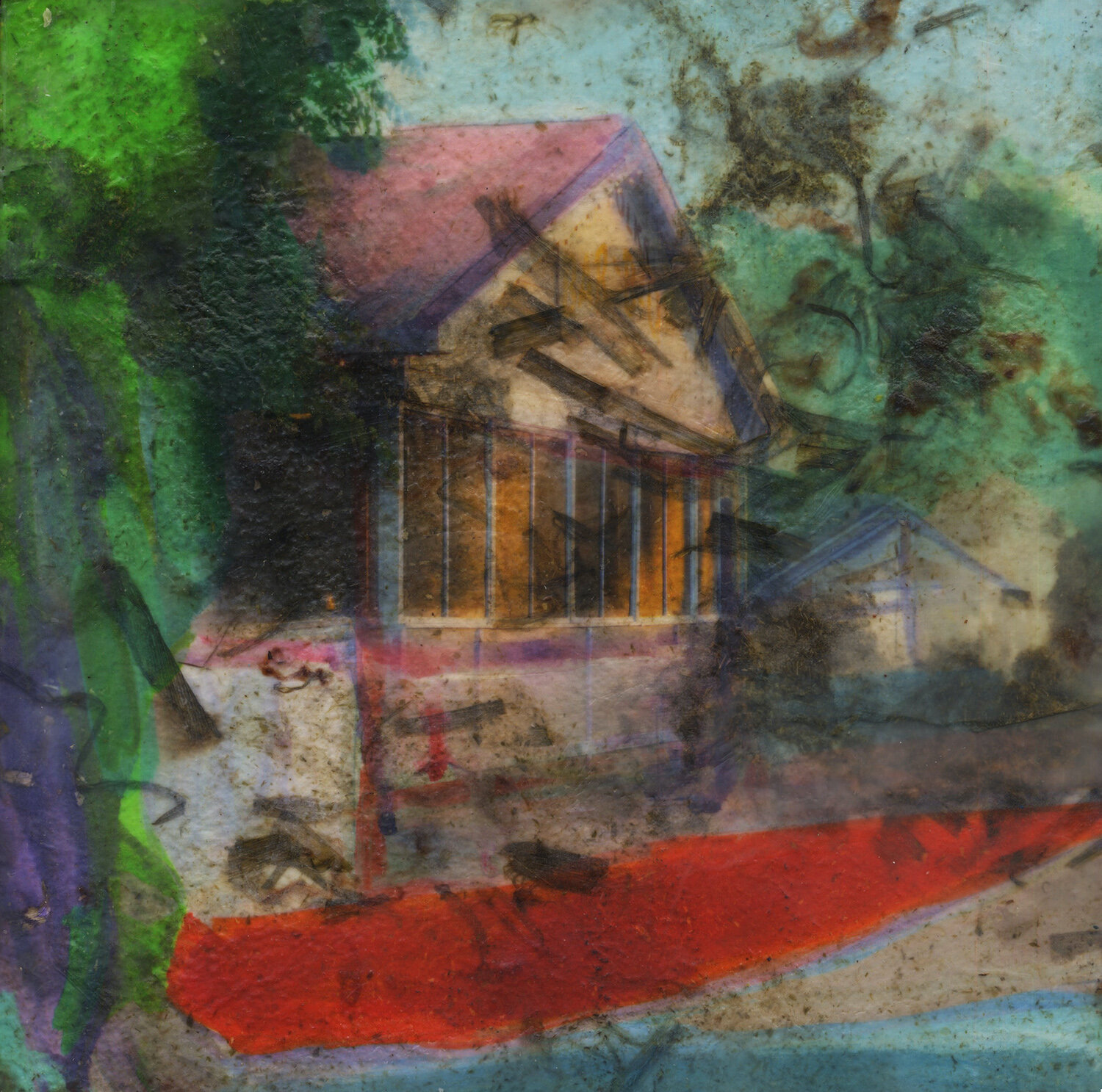
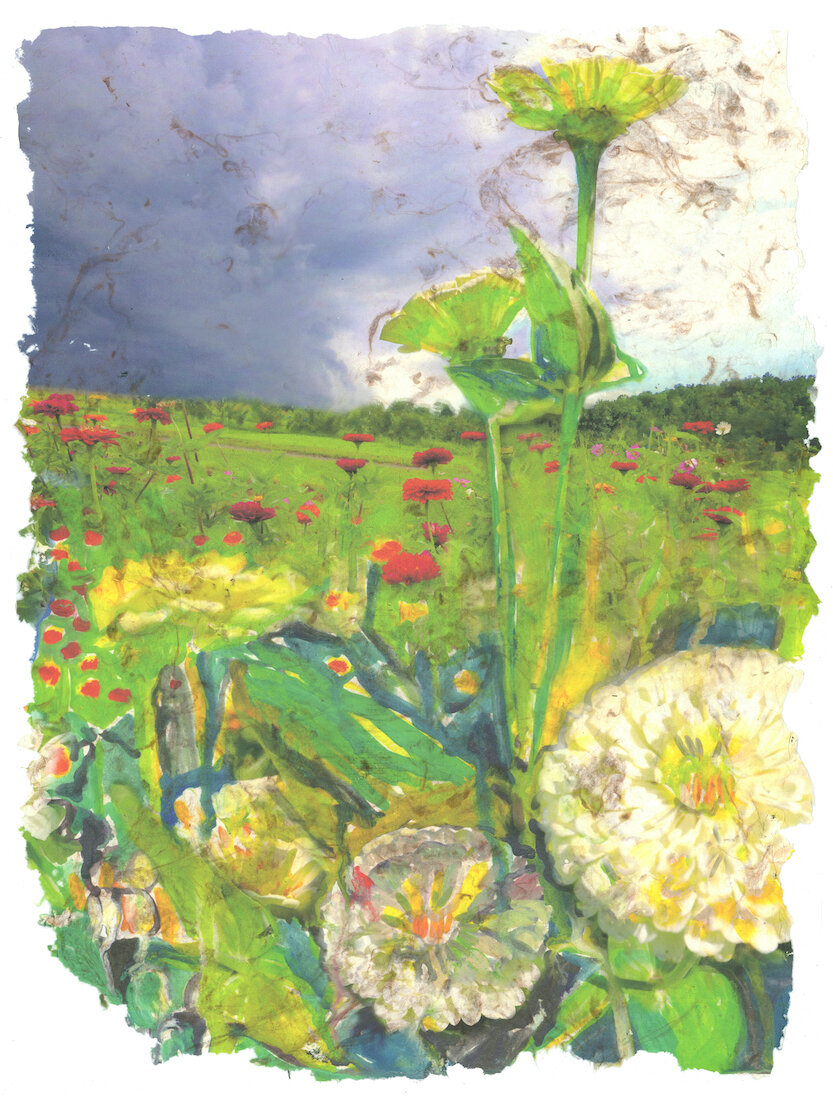
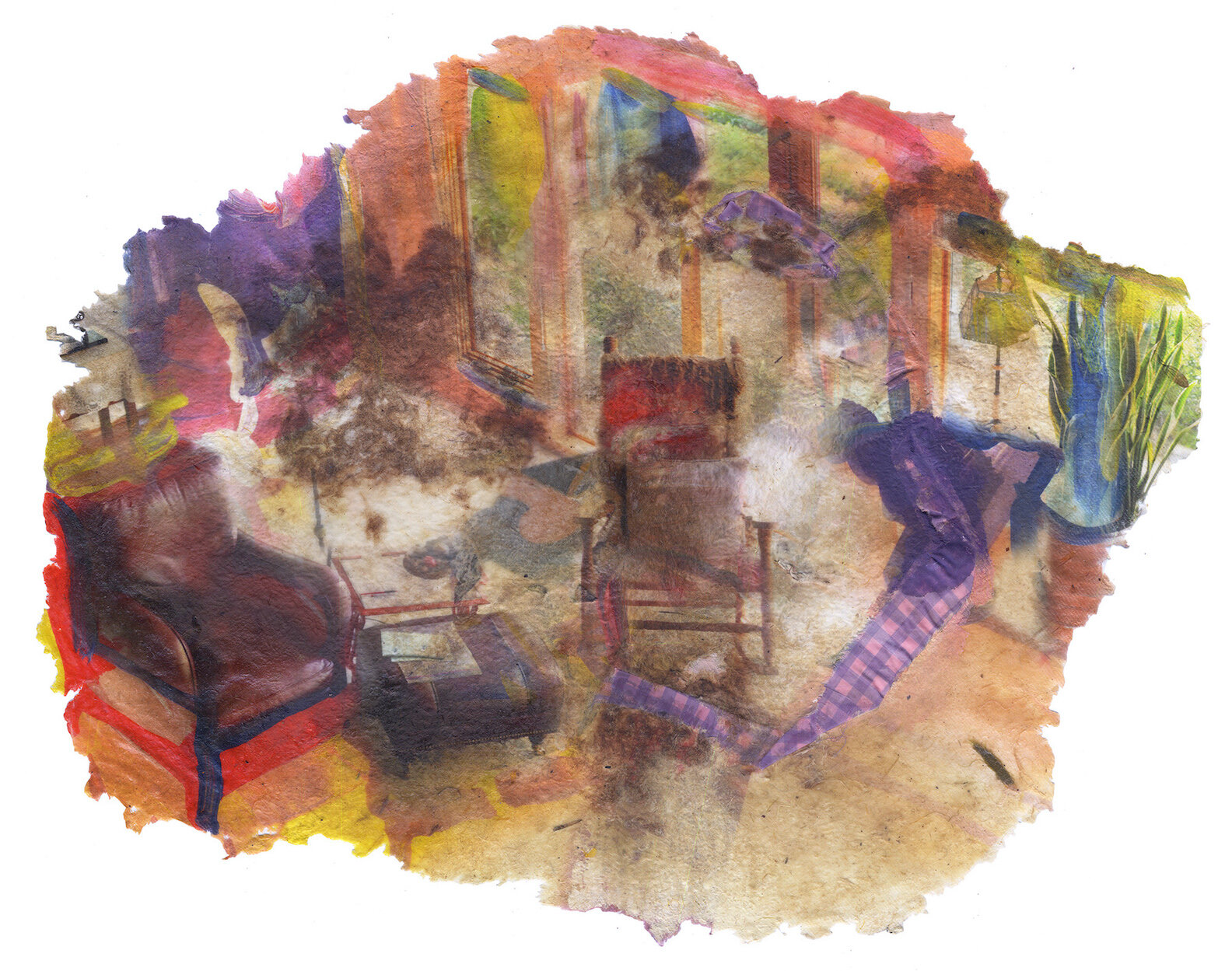
AAS: You are originally from Alberta, Canada and lived and studied in New York. There must be a story there of how you ended up on a farm in Morrilton, Arkansas. I can’t help but hear in my head the theme from Green Acres.
MCS: Yes I lived in New York City for eight years and then moved to a farm outside Morrilton. To make it even crazier, I hadn’t ever visited Arkansas before moving here! For me the move to New York was a lot more difficult than leaving the city. I grew up in Alberta in a small city the size of Conway, Arkansas. My mother was a teacher and then a child psychologist and my father was a family therapist. Although I lived in a small city, my heart was on my grandparents’ cattle ranch. I remember having tears in my eyes when I had to leave the ranch to go home. Sometimes my parents would let me get extra work from school and then stay at the ranch longer. Especially during the calving season. I thought I would grow up to be a rancher. When I went to college, I first studied ecology because I wanted to learn more about the land, plants, and animals. I had always loved art, so I took a drawing class as an escape from physics and chemistry. That class changed me. I realized that art could be a serious endeavor and that it could be a way to be interested in ecology too. Art emphasized close observation without the necessity of statistics. I became ambitious as an artist, so when I got into grad school in New York City I just had to go. I thought I needed to know what the art world really was. Even if I wouldn’t stay there forever, I didn’t want to feel like I was missing anything. Living in the city wasn’t easy for me. I loved seeing art, dance, theater, and music. But working, commuting, and just living there was a huge effort and I missed having more natural space around me.I started working part-time at a riding stable in Brooklyn. I led trail rides in Prospect Park. I have a massive appreciation for this park! We stayed in the city as long as we did because my husband, James Dow, was working on his PhD in Philosophy. He is also the reason we came to Arkansas. In 2011 he was offered a job at Hendrix College. Without even a question in my mind, I said “Yes! Let’s go!” I knew I could have horses, land, and a garden here.
AAS: You are truly a multimedia artist – photography, printing, paper making, painting, videography. Did all of these interests evolve over time or have you always had multiple outlets for creating?
“I’ve found that making paper is a lot like painting. The fibers are wet and move around. When they dry they hold the history of the movement.”
MCS: In college my focus was on painting. I’ve always felt deeply moved by seeing paintings and I love the feeling of painting too. There's magic to watching the colors move across the canvas. I also love how the space of a painting doesn’t need to have only one point of view like in a photograph. I was recently looking through an art history textbook from when I went to school and there were almost no painters who were women included. In the artworld it was ok for women to take on other forms of art such as performance, video, photography, conceptual art, digital art, and of course crafts have always been available to women. I wasn’t really aware of this bias against women being painters, but now looking back I see how it influenced my choices.
Detail from She Let It Happen showing incorporation of horsehair into printed handmade paper.
I’ve found that making paper is a lot like painting. The fibers are wet and move around. When they dry they hold the history of the movement. I enjoy making work that moves between the disciplines. Collaging, both physically and digitally, has been a way for me to think through compositions. It’s exciting to find ways to unify different media via collage. Photography has been a way for me to conduct visual research. I’m also attracted to the feeling of specificity and light in photography. I’ve found my own way of blending painting, photography and handmade paper. I feed the handmade paper into a large format HP pigment printer. I am sure the printer was never designed for handmade paper, especially with lace and horsehair added, but I can make it work!
In my recent work I’ve started using encaustic. Encaustic is an ancient and natural material made from beeswax and resin. I love that it makes the paper more durable. In my next series I plan to use wood panels and encaustic as support for the prints on handmade paper.
The video work I’ve done has been a way to play with collage only adding time and movement directly to the work. Stop-motion video has also allowed me to play with possible compositions too. Sometimes I select stills from my video work to remake into a print. Moving between media has become so established in the way I make work, that I rarely think about it. People often ask how I’ve made my work- probably because of the unusual media and technique combinations.
“The visual language of my work includes a mix of abstraction and representation.”
AAS: You seem to have a strong connection to the land and the natural environment – and this really comes through in your art.
MCS: Since childhood I have felt a deep connection to nature. It feels like a biological or ancestral necessity for me. It’s been a challenge to develop an art practice that represents some of my experience with nature. To depict nature never seemed like enough. I remember obsessively drawing and painting the sky. But these representations never actually expressed my feeling of seeing and experiencing a dramatic sky. (I love Turner and other historic landscape paintings like the Hudson River School paintings.) There’s something about the ceaseless movement and change in nature that awes me. I love the cyclical patterns of the seasons. It was a massive moment in my development as an artist when I realized that by making paper by hand from plants I could literally and immediately include nature in my work. I didn’t know any papermakers back when I started. Now that I know many all over the country, my adoption of this medium seems like an obvious step. Now I specifically grow and collect many plants for paper including both bast fiber plants such as mulberry and hibiscus (using the stringy fibers between the bark and the inner core), and seed fibers like cotton, and leaf fibers like hosta, iris, daylily, and many others. As I mentioned, I add other items to my paper too. Large pieces of plants, old summer dresses, antique lace and hair from my horse’s tails. I love how these materials convey a sense of narrative, place, and time.
Melissa making paper at her home studio.
AAS: Would you talk about your process for making paper?
Sophia overseeing the papermaking process.
MCS: There are many ways of making paper, but I’ve come up with a few strategies that seem to work well for me. As I mentioned, I use a variety of plants to make paper. So, the first step includes cutting, washing and boiling the plants with soda ash. Then more washing and beating. Beating is done to break up the fibers and depends on the plant being used. For leaf fibers I use a blender (imagine a smoothie), I beat wood fibers by hand, and for seed fibers like cotton, I use a Hollander beater. A Hollander beater is a machine that grinds the fibers against a metal plate, so they pull apart into tiny bits. I use two techniques for making sheets, I use a mould and deckle box for small sheets, and an extra-large mould (up to 60 inches) for pulp pouring. I’ve found that drying paper in Arkansas with our variable and often high humidity can be a challenge. The European technique that involves stacking wet sheets hasn’t worked well, so I’ve adopted Asian techniques of drying on the moulds or on other vertical surfaces.
AAS: Your techniques capture beautifully the real and surreal at the same time – highly recognizable yet disorienting in a way.
MCS: The visual language of my work includes a mix of abstraction and representation. There are a lot of shifts in point of view. Sometimes my work moves more towards a chaotic abstraction and sometimes it’s easier to read. I’ve found aspects of each of the mediums I use that help create this language. I try to balance the movement of gestural paint and paper with the specificity and stillness of photography. Ultimately, I want to make work that resonates with people in emotional ways they feel are both true and hard to explain. This is also the work that I want to see. I remember tears streaming down my face while in a Munch exhibition or in front of a Rothko painting. I could never figure out why everyone wasn’t crying at these shows. I guess viewers aren't always ready to be open to artwork. In my own work, I seek a feeling that’s really hard to describe in ways that don’t sound cliche´. They are like the feeling of missing your Grandpa, or your old dog. Where you know things change and you are grateful for the present moment, but there’s some loss.
AAS: I can see where your landscapes and interiors would lend themselves to commissions. Do you do many commission pieces?
MCS: No, but I would like to. The people who become subjects of my work are of interest to me because of their connection to materials and place. I start my process by conducting long interviews where we talk about everything – religion, family, history, place, illness, health, politics – all of it. The best interviews and resulting artworks have come from subjects who are open about the narrative of their lives. When they share stories they’ve gone through I can find echoes of their experience in their homes and gardens. Not everyone wants to open up like that and I don’t know if my subjects like the work I make based on their things. I’ve offered prints to them and they have often chosen prints from other people’s homes. I guess it depends on the feeling of the work. Some works just feel happier and are probably easier to decorate or live with.
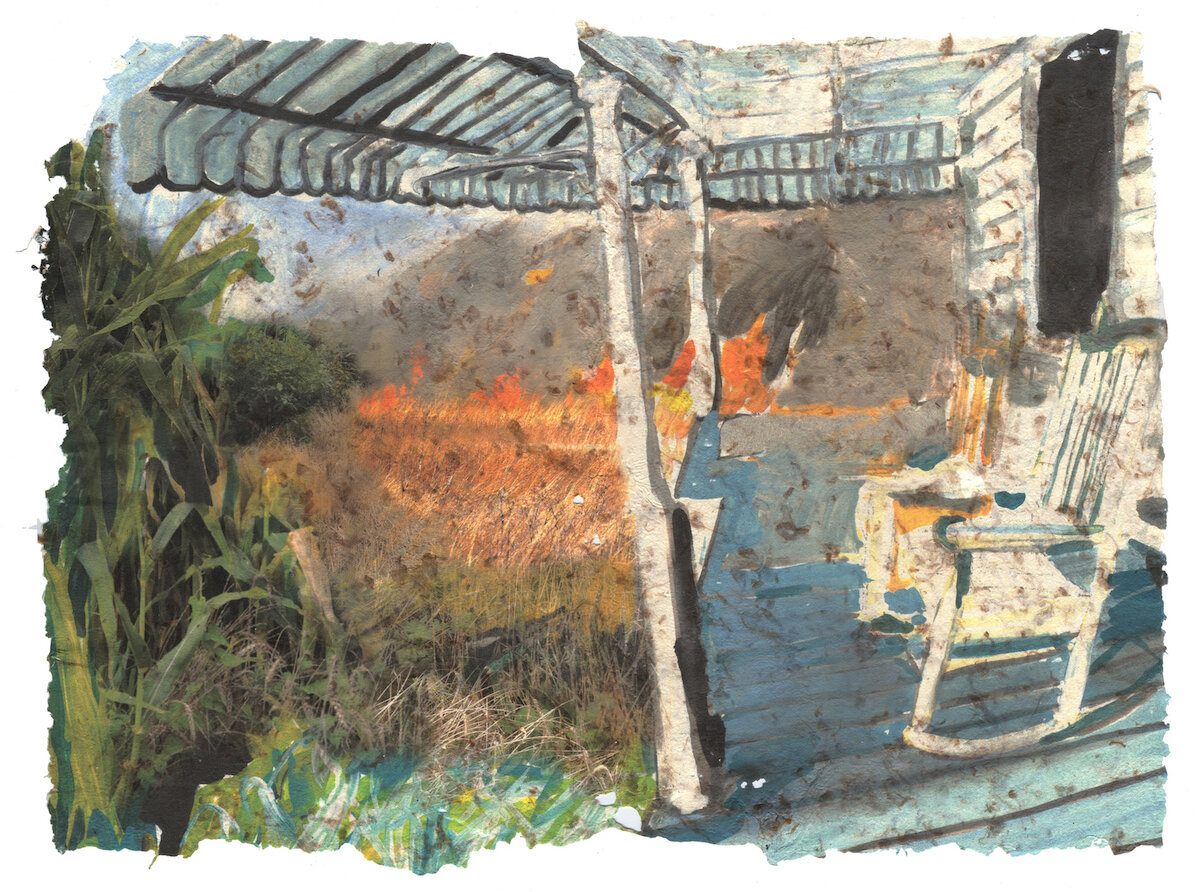
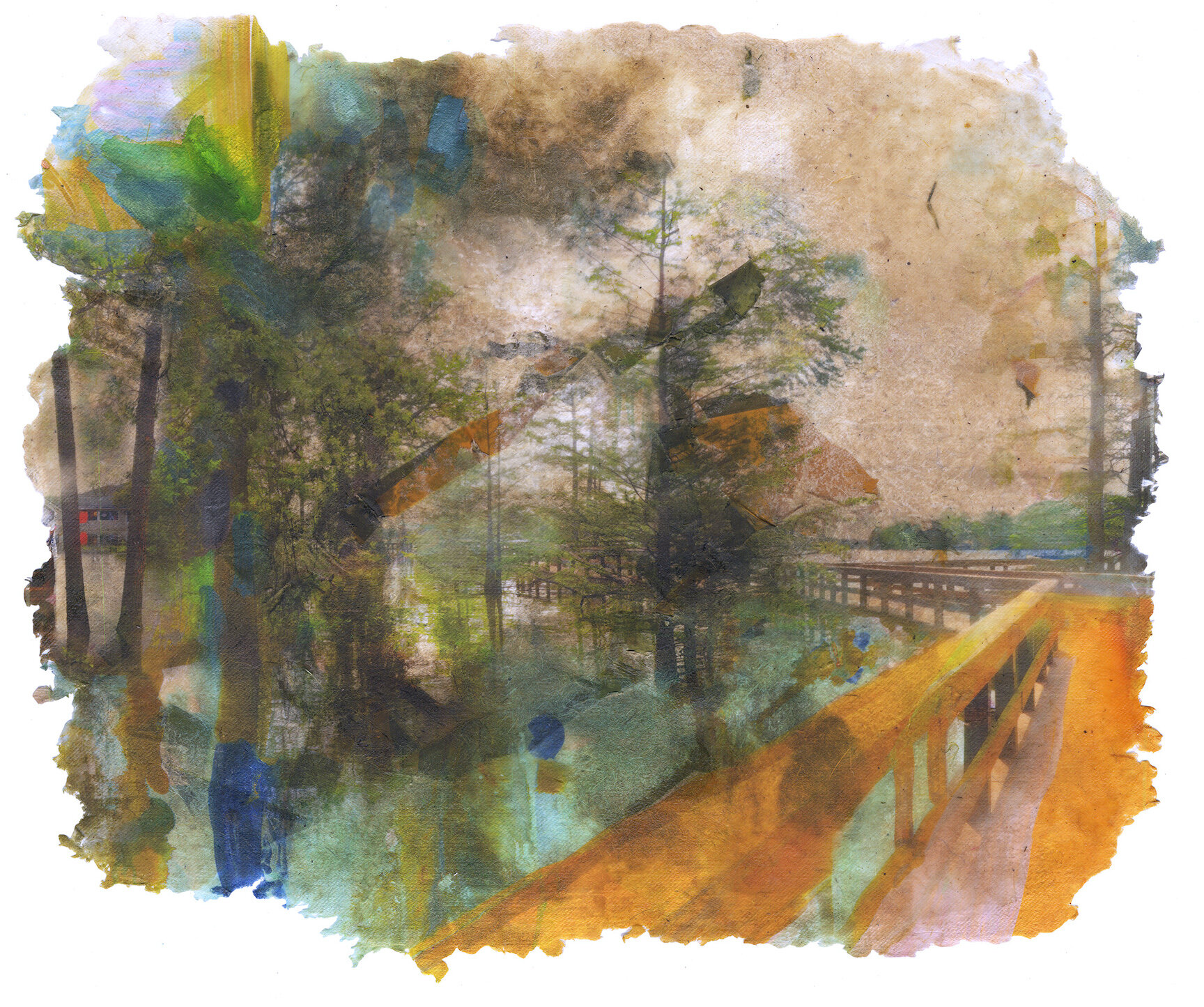

AAS: You’ve been awarded scholarships and grants from the Arkansas Committee of the National Museum of Women in the Arts (ACNMWA) and from the Arkansas Arts Council. Would you talk about the importance of these organizations to artists around the state?
MCS: I’ve been very lucky to have been awarded these scholarships, fellowships and grants! These have been a huge help in making my work. The Individual Artists Fellowship I received from the Arkansas Arts Council was a game changer in buying supplies and equipment. I was able to purchase new encaustic equipment and pigment for my printer. The pigment alone costs $1,200! Making art is expensive and it’s a challenge to sell enough to cover all the costs. Not all artists make a product to sell, for example my video work. To make this kind of work, artists require funding such as grants, fellowships, and funded residencies. The Artists Scholarship from the ACNMWA and a Horn Scholarship from the Penland School of Craft I received have allowed me to travel out of state to learn new skills. It was amazing to learn from masters of papermaking and encaustic. Without the funding those trips wouldn’t have been possible for me. I am so grateful that financial donors see the value and contribution art can make for a culture and community.
Mom’s Shirt and Heartache, pigment print on handmade paper, herbs, fabric, encaustic, gouache, 22” x 28”
AAS: You’ve had recent exhibits at the Batesville Area Arts Council, the Bradbury Museum at the University of Arkansas Jonesboro, and at several venues in Little Rock. How would you describe the art scene around the state?
MCS: I moved from an overwhelmingly massive art scene in New York City to a small and supportive art scene in Arkansas. I am usually surprised when I hear an Arkansas artist mentioned and I haven’t heard of them or know them fairly well. There are certainly smaller regional scenes too, but enough crossover that we all have a sense of who’s doing what. Before Covid you could walk into an opening and be sure to know some of the artists in the room. Although I don’t know as many of the curators, they too are part of a fairly small community. It’s been wonderful having a mix of showing opportunities for my work! It’s always fun seeing it up for a public audience! I do wish there was more critical writing about art in Arkansas. We get a bit of it from The Idle Class, The Democrat-Gazette, and Number Inc., but I wish there was more! I know it’s a challenging time for small publications but building energy in the arts does require an audience, dialogue and feedback. Thank goodness for your blog Philip!
With Their Own Hands, pigment print on handmade paper, bamboo, hosta, linen, 16” x 21” – 60th Annual Delta Exhibition, 2018
AAS: You have been in the Delta several times and 2018 you actually had two works accepted. With Their Own Hands is a charming piece and I do remember peering into your multimedia work Unremember. It was a wonderful experience.
Urban Farming, pigment print on handmade cotton paper, 21” x 15” – 57th Annual Delta Exhibition, 2015
MCS: It’s been great fun having work included in the Delta! The opening events have been a blast! The last time my work was included they showed a video and a print. It can be challenging to exhibit projected video work in large group shows. Projections need darker spaces and can take up a lot of room on the wall. The Arkansas Arts Center did a great job negotiating this challenge! I think more people remember my work from this video than most things I’ve made. Or at least I’ve been asked “Are you the artist that made the video in the Delta with the moving collage?” The video, Unremember, is a short looping stop-motion animation. To make it, I digitally collaged imagery of handmade paper, paintings, and photos. Anyone who has worked in stop-motion will know the enormous time it takes to work in this medium! The imagery in this video includes homes, lakes, fires, smoke, mist, explosions and abstract sections of paint and paper that slip and move through the scenes.
Video (above) and stills (below) from Unremember, 60th Annual Delta Exhibition, Arkansas Arts Center, 2018.
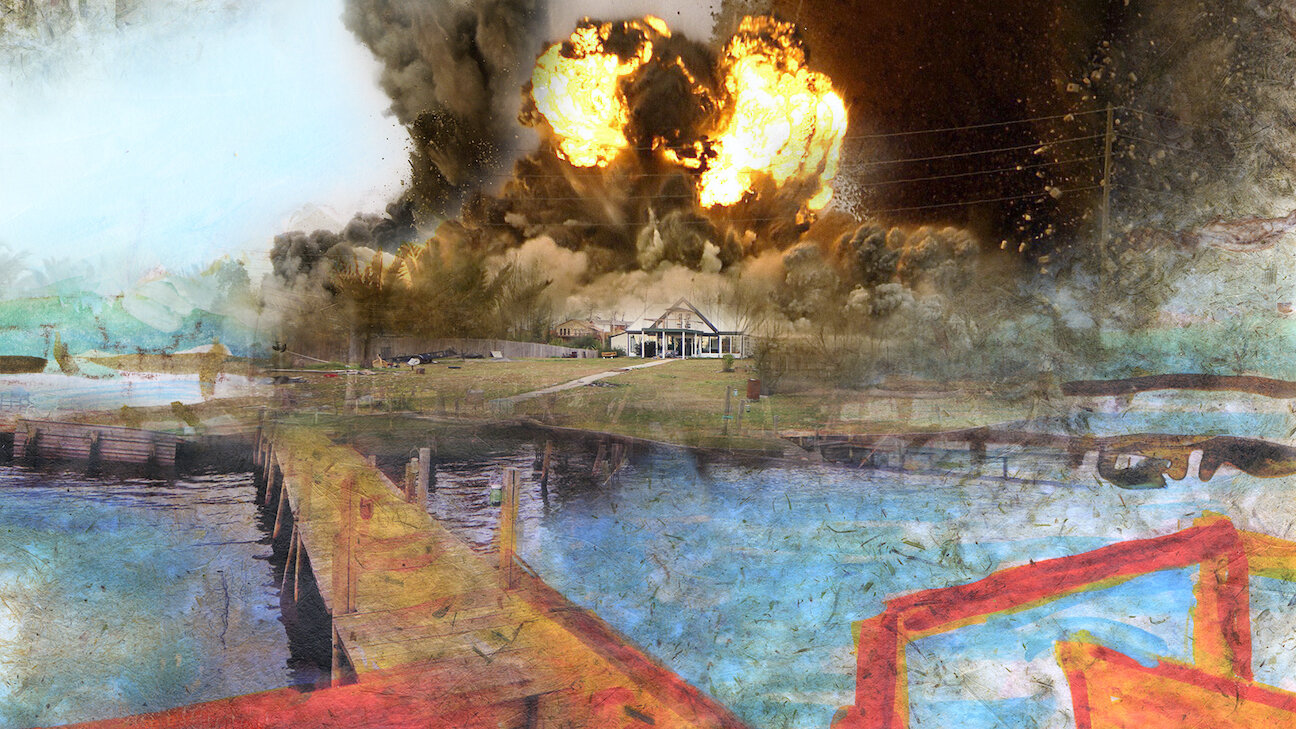

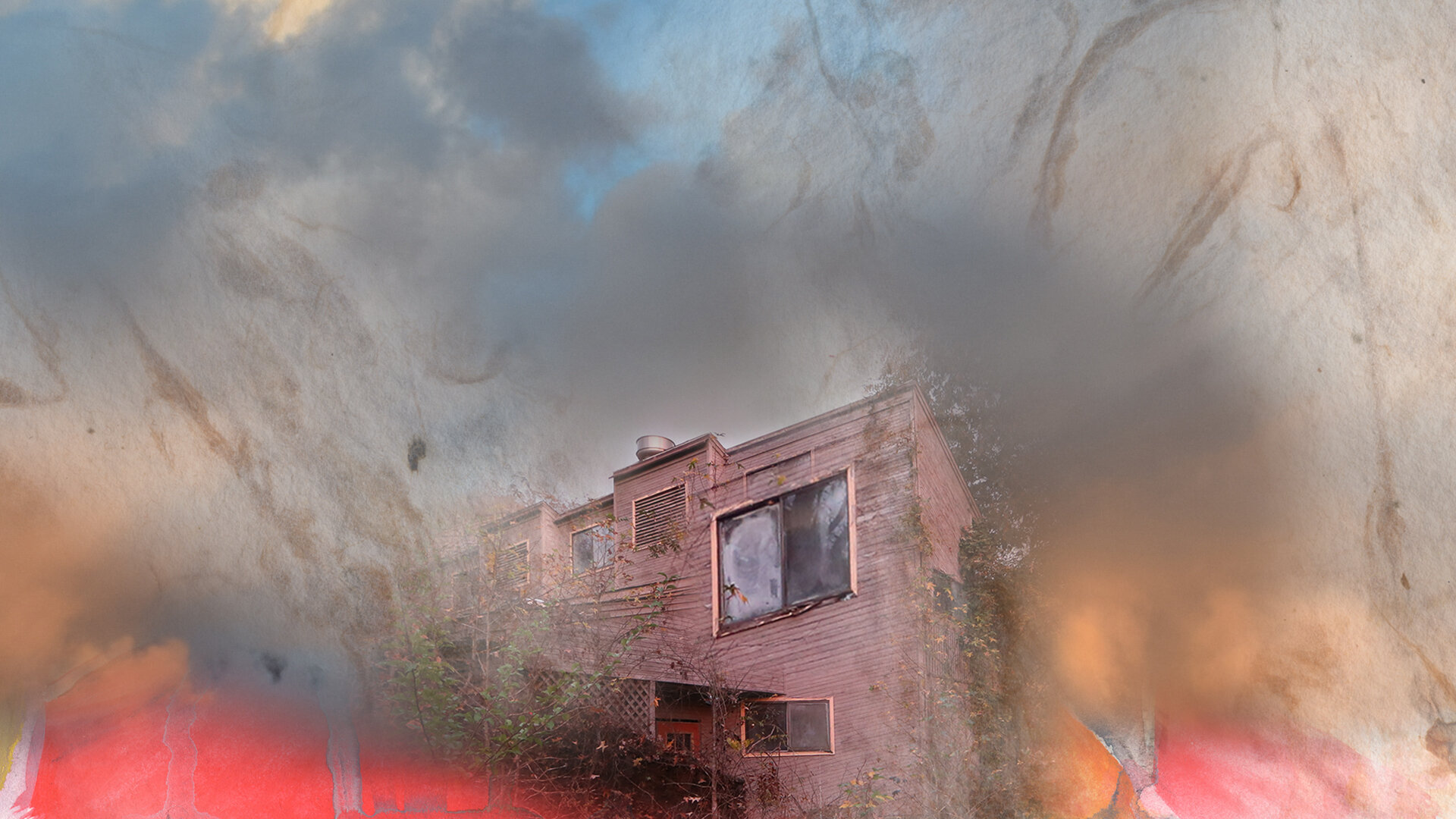
Lobelia (pines), pigment on handmade cotton paper, oil and encaustic on board, 12” x 12”
AAS: Lobelia (Pines) is one of my favorite pieces. It is the texture, abstraction, color palette – I don’t exactly what, but I am drawn to it. I guess it brings back some memories of growing up in piney woods of south Louisiana.
MCS: I’m glad it reminds you of your childhood trees! I have always loved trees. As a kid I named each tree in my backyard. I have an affinity for pines. I love the sound the wind makes when it passes through their branches. It’s an old sound, eerie, and filled with a sense of space. Pines are incredibly expressive trees, their branches gnarled and individual.
The title of this piece is a little strange, since Lobelia is a small flowering plant, not at all related to pines. For each of the works in this series I used a medicinal plant name to represent some shared property between the medicinal plant and imagery. So, Lobelia is used medicinally for treating respiratory conditions. I formed a connection between the air around a pine tree and breathing well.
Ashwagandha (Fire), pigment on handmade paper, oil and encaustic on board, 12” x 12”
AAS: Ashwagandha (Fire) was shown at the Galleries at Library Square. Talk about that piece and that gallery as a venue for Arkansas artists.
MCS: Ashwagandha (Fire) is in the series based on properties of medicinal plants. Ashwagandha is an ancient Ayurvedic plant that people take to reduce anxiety and stress. It is also taken to build up energy, hence the connection to fire. The imagery of the fire feels really important right now. Fire can both destroy and cleanse. It is transformational and powerful. Humans have always sat next to fires to contemplate life, meaning, and change.
It’s been my pleasure to show work at the Galleries at Library Square on a few occasions including a solo show in their loft space. This show was organized in partnership with the Arkansas Committee of the National Museum of Women in the Arts as part of a scholarship. The scholarship funded travel to Colorado to learn encaustic at the Anderson Ranch Arts Center. Really there’s nothing better than having the chance to travel, learn a new skill, make a new series of work, and then have them shown in a great space. This particular work was purchased within a few minutes of the opening reception!
AAS: You seem to enjoy teaching and you have conducted many workshops, including for Crystal Bridges. What do you hope the participants take away from the workshops and how has that changed in these times of Covid?
Melissa conducting a workshop on papermaking at the University of Arkansas at Little Rock. (photo courtesy of Michael Warrick)
MCS: I love teaching! It’s so much fun getting to share an activity I enjoy with other people. I think of learning new art skills as a challenging game. Where you are trying to figure out the rules and also how to break some rules too. There’s a push and a pull between expectations and questions. This realm between “I should do this” and “what is possible?” is where creativity lies. I ask my students to find a way to do both. Those moments of realization as a student are so important. I know that my own teachers have no idea how much their lessons have meant to me. It’s an absolute honor to be able to spark a light for someone else’s creative journey.
Since Covid started impacting us in March I’ve taught online college classes, virtual workshops, and private lessons. I’ve taught papermaking, collage, paper-cutting, painting, and drawing all entirely online. I thought teaching art online might be impossible, but actually it’s been very rewarding and exciting. Presenting lessons is tricky- there’s a production to using the phone, computer, lights, and sound to make it all work. In some cases, I do live demonstrations, other times I’ve pre-recorded demos and then share them with students. My favorite part is discussing the students’ work and talking through ideas and connections. Since we have computers right in front of us, we can screen share our ideas, research, and images really easily. So, there is this back and forth of ideas that’s actually in some ways is easier than in person. We all are getting better at documenting our work too!


